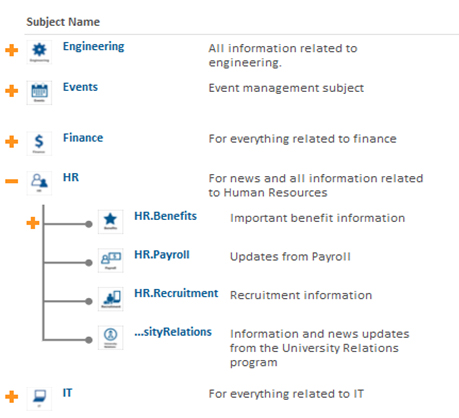Last week we covered the best practices for posting a message on your enterprise social network, and as promised, this week we’re looking at the best practices for organizing tibbr subjects into a logical hierarchy to make it easy for users to follow relevant information.
Some subjects are more high level than others. It helps to have an organized hierarchy of main subjects with sub-subjects underneath. For example, there could be a main subject for Marketing, and a sub-subject for Analyst Relations. At TIBCO, we found that the best way to organize subjects was to create main subjects for departments, newly acquired companies and general topics: competitors, customers, events, news, products, travel, technology and markets.
 We also found it was better to place departments as high level subjects, followed by sub-subjects for specific regions and teams. For example, we had Sales as the main subject, then North America, APJ and other regions as sub-subjects, followed by another level of sub-subjects for specific teams. Users could decide if they wanted to follow a broad high-level subject like Sales and receive all messages related to Sales, or dive down deeper and just follow very specific sub-subjects for their team and projects.
We also found it was better to place departments as high level subjects, followed by sub-subjects for specific regions and teams. For example, we had Sales as the main subject, then North America, APJ and other regions as sub-subjects, followed by another level of sub-subjects for specific teams. Users could decide if they wanted to follow a broad high-level subject like Sales and receive all messages related to Sales, or dive down deeper and just follow very specific sub-subjects for their team and projects.
However, every organization is different and has its only logical structure for organizing subjects. Several of our customers have found that having fewer parent subjects or main subjects, makes it easier for users to find sub-subjects.
Our tibbr Community Managers, comprised of world-class knowledge managers and social collaboration strategists, can help your organization design a logical structure for your subject hierarchy. They work with our customers on everything from getting tibbr set up and running to adoption and rollout strategies. For more information, go here.





